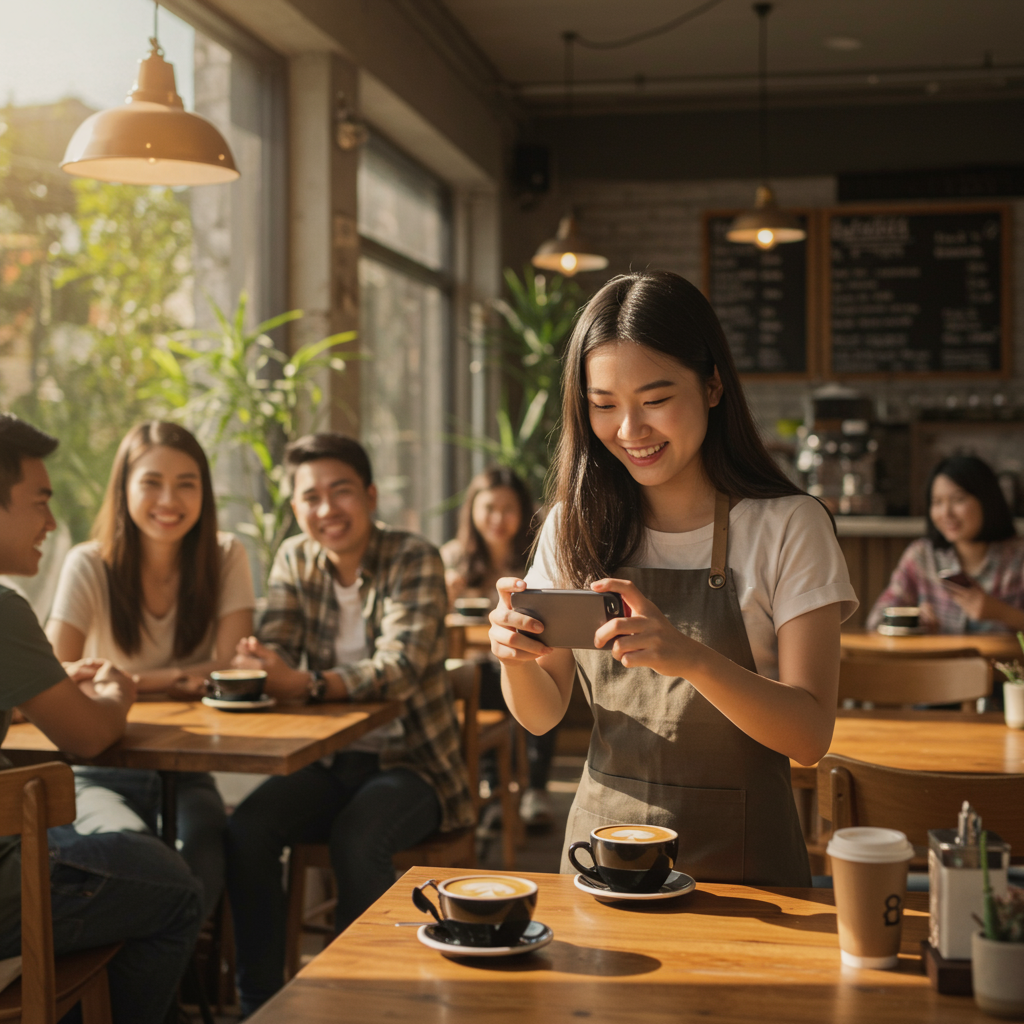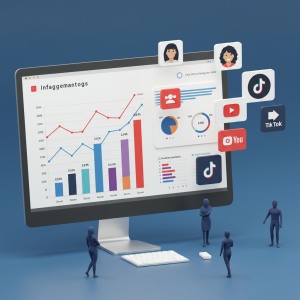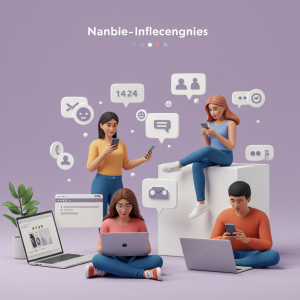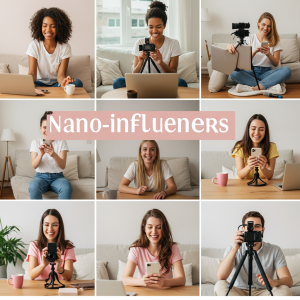Harnessing Nano-Influencer Marketing for Authentic Engagement

In an era where audiences crave genuine connections and local experiences, nano-influencers—creators with audiences between 1,000 and 10,000 followers—are rapidly emerging as catalysts for hyper-local brand advocacy. Unlike macro or mega influencers, nano-influencers maintain close-knit communities, high engagement rates, and authentic voices.
What Are Nano-Influencers?

Nano-influencers are individuals who have cultivated dedicated followings that are typically niche or geographically focused. Their smaller audience size allows for more personal interaction, fostering trust and a sense of community unavailable at scale. Brands turning to nano-influencers benefit from genuine word-of-mouth recommendations, often leading to higher engagement rates—sometimes three to four times greater than those of larger influencers. This authenticity is powerful for hyper-local campaigns targeting specific neighborhoods or community segments. Learn more aboout Influencer Marketing for Beginners
Key Benefits of Nano-Influencer Campaigns
Nano-influencer marketing unlocks several strategic advantages for brands seeking authentic connections. First, cost-effectiveness: smaller creators typically charge less or accept product exchanges. Second, niche targeting: brands can engage influencers who speak directly to their ideal audience—whether it’s eco-conscious shoppers, fitness enthusiasts in a specific ZIP code, or parents in a local school district. Third, authenticity: followers view nano-influencers as friends, so product endorsements feel more credible and organic.
How to Find the Right Nano-Influencers
Locating the perfect nano-influencers begins with research and social listening. Start by defining your campaign goals and audience personas: are you promoting a new bakery, craft brewery, or boutique fitness studio? Use Instagram and TikTok location tags, hashtags, and community groups to uncover creators who post about your neighborhood or product category. Tools like BuzzSumo, HypeAuditor, and Upfluence offer filters for follower count, engagement rate, and location. Engage with prospective influencers by commenting on their posts or sending a friendly direct message to gauge interest.
Crafting an Effective Nano-Influencer Proposal
When reaching out to nano-influencers, personalize each message to show you’ve done your homework. Reference their recent posts, highlight what you love about their content, and explain how your brand aligns with their values. Be transparent about deliverables—number of feed posts, stories, or Reels—and compensation structure, whether monetary or via products/services. Clear contracts and agreed-upon timelines foster trust and ensure accountability, minimizing misunderstandings mid-campaign.
Developing Campaign Concepts for Hyper-Local Impact
Hyper-local campaigns thrive on relevance and community spirit. Encourage influencers to create content that features local landmarks, resident interviews, or behind-the-scenes looks at your business. For example, if you run a neighborhood bookstore, ask a nano-influencer to curate their favorite reads on a cozy couch corner while tagging your shop. Limited-time offers, exclusive discount codes, or small in-store events co-hosted with influencers can spark urgency and drive foot traffic.
Maximizing Engagement Through Storytelling
Compelling narratives resonate deeply with local audiences. Work with influencers to share personal stories—such as how they discovered your brand at a weekend market or why your organic juice bar is their post-yoga ritual. User-generated content that highlights real experiences and emotions amplifies authenticity. Encourage influencers to ask questions of their followers or host quick polls in Stories, boosting two-way communication and strengthening community bonds.
Leveraging Platform Features
Don’t just rely on static posts. Use Stories, Reels, or TikTok challenges to capture attention with dynamic formats. Instagram Guides can compile multiple nano-influencer reviews into a curated local guide. Geo-tagging and location stickers improve discoverability among users browsing local content. For Facebook, community groups and local event pages are excellent for sharing influencer-hosted meetups or giveaways, creating real-world touchpoints that reinforce digital messages.
Tracking and Measuring Campaign Success
Setting clear KPIs is essential for measuring nano-influencer ROI. Common metrics include engagement rate (likes, comments, shares), reach within the target area, website visits via UTM-tagged links, and redemption of unique promo codes or QR codes. For in-store promotions, track foot traffic spikes during campaign days. Post-campaign surveys can assess brand awareness lift and sentiment shifts among local customers.
Calculating Cost-Effectiveness
Because nano-influencers often charge modest fees, calculate your cost per engagement (CPE) rather than cost per follower. Divide total campaign spend by the number of meaningful engagements (comments, saves, direct messages). Compare these figures with alternative tactics—such as local Facebook ads or email marketing—to justify ongoing investment in nano-influencer partnerships.
Navigating Compliance and Disclosure
Even small creators must follow advertising regulations. Ensure each post includes clear disclosures such as #ad or #sponsored, in line with FTC guidelines. Provide simple instructions on where and how to place disclosures. Transparent partnerships build trust with audiences and protect your brand from potential legal issues.
Case Study: Coffee Cart Collective
Local coffee cart Collective partnered with five nano-influencers who each had 2,000–5,000 followers in the same ZIP code. Over four weeks, influencers posted latte art tutorials, behind-the-scenes roasting sessions, and hosted small popup tastings. The campaign drove a 30% increase in new customer visits, 500 new Instagram followers, and a 12% uplift in weekend sales—all at a combined cost 40% lower than a nearby radio spot.
Best Practices and Pitfalls to Avoid
To maximize success, maintain open communication and mutual respect. Provide influencers with creative freedom while offering brand guidelines to keep messaging on point. Avoid overloading them with strict scripts or last-minute changes. Don’t rely on vanity metrics like follower count alone—prioritize genuine engagement and audience relevance above all.
Scaling Your Nano-Influencer Program

Once you’ve proven concept with a few partnerships, consider forming an ongoing ambassador program. Offer tiered incentives—exclusive menu previews, loyalty rewards, or commission on sales—to retain high-performing creators. Use influencer management tools to track content calendars, performance data, and payments, streamlining your processes as you scale from a handful of participants to dozens across neighboring communities.
Budgeting Tips for Small Businesses
Allocate a dedicated budget line for nano-influencer marketing, factoring in compensation, free product samples, and potential event costs. Negotiate performance-based agreements where possible, such as bonus payments for hitting engagement or sales targets. If cash flow is tight, offer product credit or cross-promotion support—many nano-influencers appreciate collaboration over a purely transactional relationship.
Conclusion
Nano-influencer marketing represents a powerful tool for brands seeking authentic connections and hyper-local reach. By partnering with engaged creators, crafting compelling narratives, and measuring results with precision, businesses can unlock new customer segments and foster lasting community loyalty. Start small, iterate based on performance data, and scale your program to transform local buzz into measurable growth.





